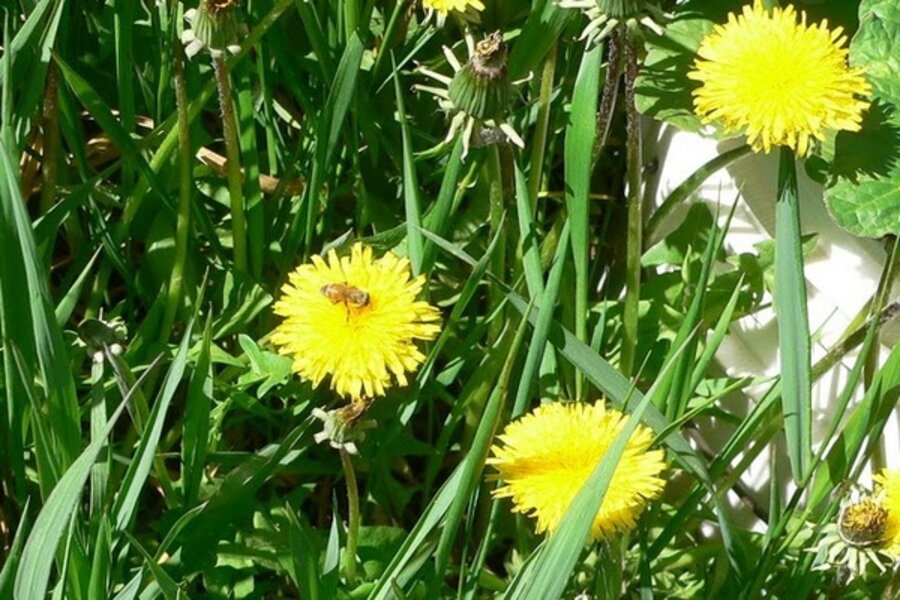Tips to attract bees to your yard
Loading...
On the plains in northern Colorado, gardens are asleep under a few inches of snow but honeybees are stirring. My husband, Oscar, keeps a few hives, and he likes to sit and observe them for at least a little while every day, or longer when he can.
Recently, as temperatures climbed after a frigid week, we watched several hundred bees tumble out the entrance to their boxes and buzz around the hive in a loose cluster. A few flew right into the snow and some landed, dazed, on their backs. They buzzed around upside down, digging themselves in deeper until they managed to either flip over or wear themselves out.
Others crept around feebly, becoming colder and weaker. A theory suggests that bees mistake snow for the sky.
Our cat stalked the shaky, grounded bees, but Oscar held her off with snowballs. He picked up some bees and warmed them in bare, cupped hands. He says when they came to and flew off his hands, it felt as though he helped recharge their life force.
There are still two months until their first major food source is available -- dandelions. Not everyone appreciates bees (or dandelions) the way beekeepers do.
Most people confuse bees with wasps and worry about getting stung. Oscar worries about “his” bees flying when it’s too cold or getting swept up by a sudden, strong gust of wind. The warm Chinooks can top 80 mph this time of year. And there are overarching concerns about bees disappearing and colonies collapsing.
Several years ago I planted a hedgerow of Nanking cherries and a small mixed orchard. We’ve noticed a big increase in fruit production since the bees joined us.
Bees and blooms
I’ve also learned a few things about bees and flowers:
- Large swaths of plants that bees like make foraging more efficient and worthwhile than a mixture of many different types of flowers; 20 lavenders will attract more bee attention than two.
- Fragrant linden blossoms make delicious honey and are one of the honeybees' all-time favorites, but they also love early bloomers like willows and common silver buffaloberry, with flowers so subtle people don’t even notice them.
- Tough, drought-tolerant Blue Mist Spirea (Caryopteris x Clandonensis ‘Blue Mist’) and native dwarf rabbitbrush, which bloom from late summer into fall, attract a crowd of eager bees of all types when fewer pollen and nectar sources are available.
- Modern hybrids with double flowers may look pretty, but they do nothing for bees.
The importance of insects
Apparently, we are killing off insects, the basic building block of the food chain, at an alarming rate. Not only honeybees, bumblebees, and others that pollinate plants, including much of our food, but also spiders, caterpillars, earthworms, and microscopic soil creatures that transform organic waste into “black gold” for plants. Most birds depend on insects for food, especially when they’re breeding and rearing their young.
Large-scale, commercial farming methods bear much of the responsibility, but since urban and suburban yards now represent a large percentage of the habitat for pollinators and other insects, the practices of individual homeowners and gardeners really do add up to a significant effect.
If we seek out plants that support pollinators, plant some natives to sustain insect diversity, and pass up lawn and garden chemicals, we can spark life in our gardens.
-----
Jane Shellenberger lives on five acres at 5,000 feet on the plains in Hygiene, Colo., between Boulder and Longmont. She is the publisher and editor of Colorado Gardener, "a thinking gardener's companion." Her book," Organic Gardener's Companion: Growing Vegetables in the West," will be available in 2012.





